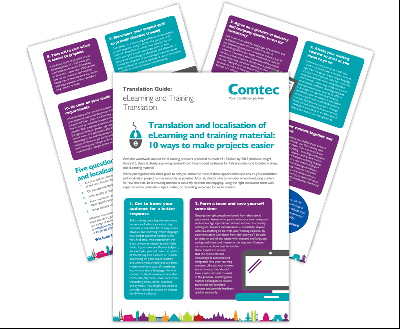Search for...
#elearning Bookmarks
Published Bookmarks
Why Companies Should Embrace a Mobile Learning Management System - ProProfs
The advent of digital media and smartphones have contributed towards breaking new grounds for the entire education and training sector.
10 Myths About Professional Training
There are a lot of assumptions about professional training. But how many are grounded in fact? Findcourses.com identifies and debunks some of the more common myths in this infographic. Check it out!
Adapt Learning - Free eBook
Adapt Learning - Transform the way you create and distribute training. Download the free eBook that provides several insights about Adapt learning.
How to Design Corporate eLearning Solutions to Train Your Millennial Employees - Anadea
This article provides insights on how to develop corporate eLearning solutions that help to keep young employees engaged and retain them in your company.
8 Tips To Develop Interesting Online Training Characters For Corporate eLearning
Wondering how to develop interesting Online Training Characters? Check 8 tips to develop interesting Online Training Characters for your corporate eLearning program.
Black Belt In Negotiations: How to Improve Your Employees’ Skills with Dialogue Simulations
Learn how to improve your employees’ communication skills with Dialogue Simulations and how to create effective simulations for eLearning.
Is Your Instructional Design Strategy Right For Your eLearning Project?
Implementing instruction and collaborating with Subject Matters Experts aside, the early stages of planning and designing an effective learning experience are influenced greatly by the Instructional Design strategy employed.
eLearning Course Evaluation: 10 Questions To Ask Employees AFTER A Corporate eLearning Course
Wondering what to ask employees after they've complete a corporate eLearning course? Check 10 questions to ask your employees during eLearning Course Evaluation.
 Top Tips - Guide on e-Learning and Training Translation
Top Tips - Guide on e-Learning and Training Translation
There are many opportunities to engage with global audiences by providing eLearning and training materials in multiple languages.
We have compiled a short guide sharing the essential steps needed to ensure a smooth eLearning translation and localisation process.
Get started today by downloading this 10 step guide.
We have compiled a short guide sharing the essential steps needed to ensure a smooth eLearning translation and localisation process.
Get started today by downloading this 10 step guide.
The key to successful e-learning materials? Engagement
What's driving organisational learning today? From talking to clients and connections made at @LT18uk, Susan Lankfer thinks it's 'engagement'. What do you think? Read her blog on the Learning Technologies event, and what engagement means to e-learning providers, suppliers, and learners.
Submit Bookmark




